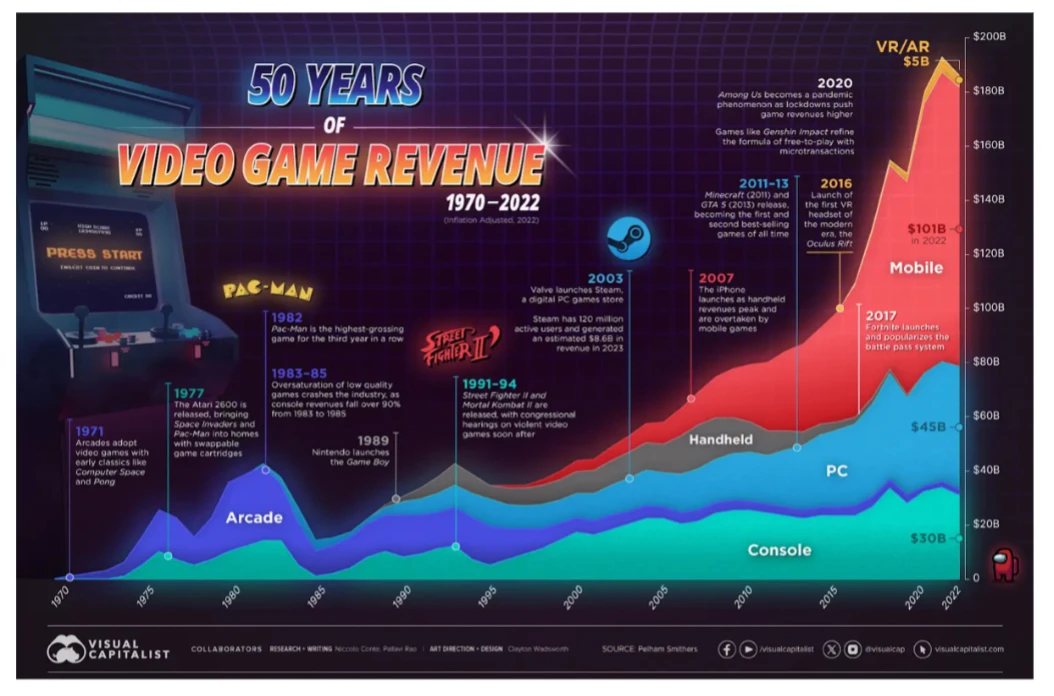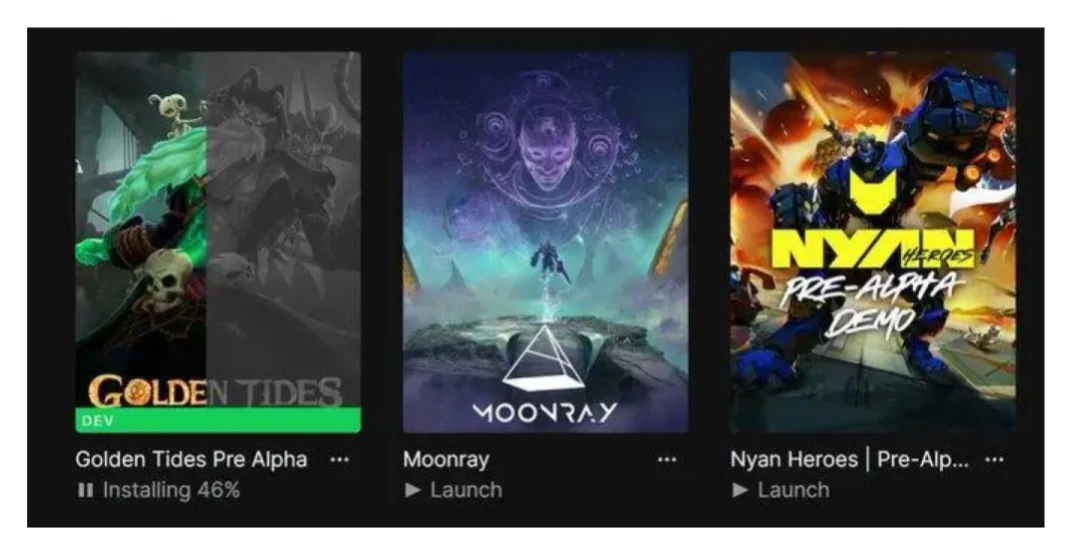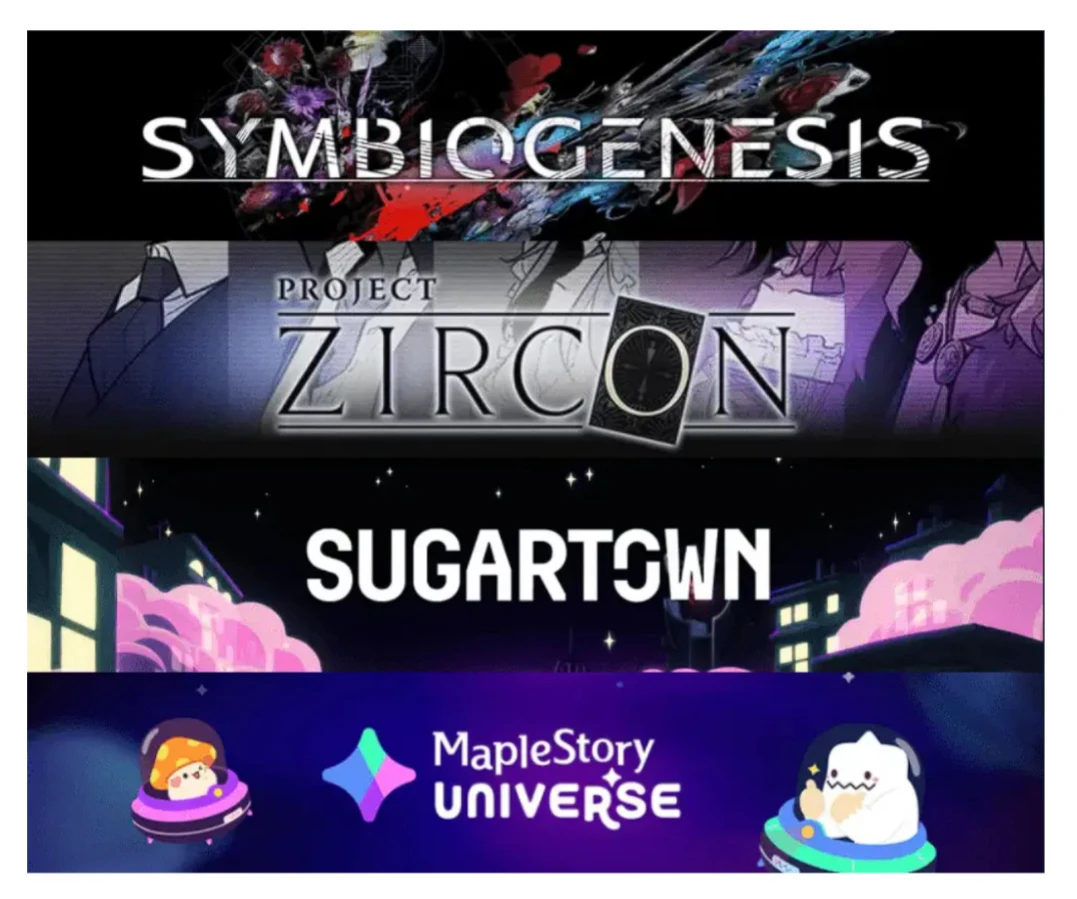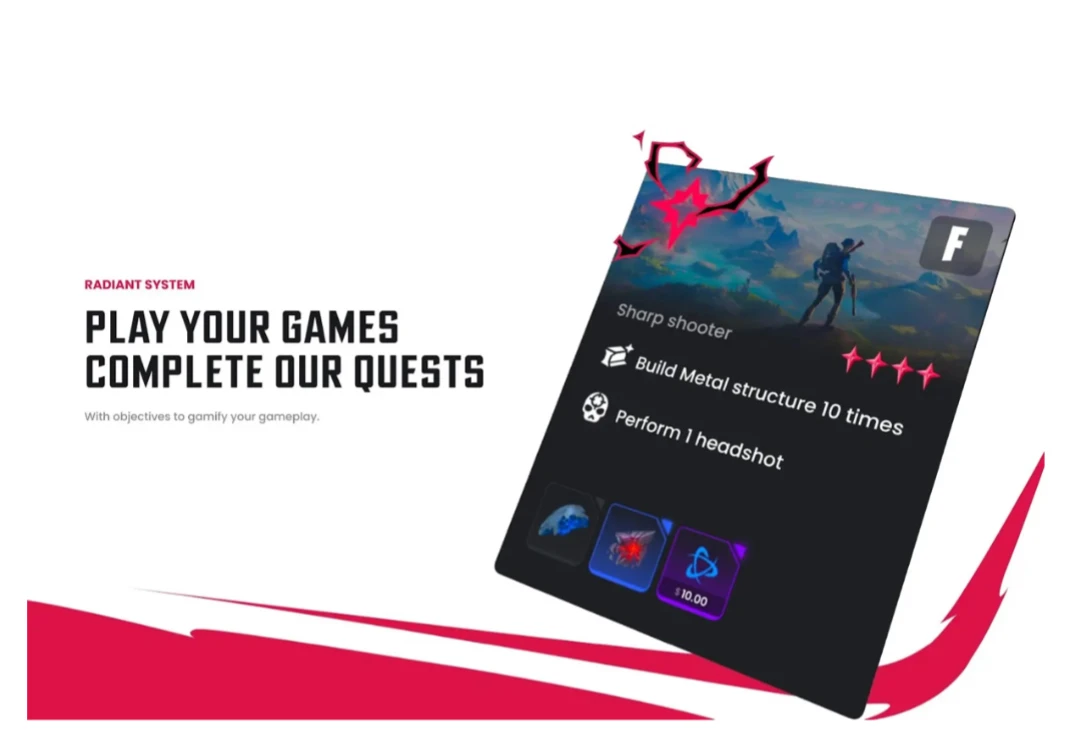The sharp price drop in the market tests our faith. In addition, Q2 of this year is generally considered to be an uptrend, but the market performance is relatively weak. This is the current situation of Web3 games.
However, we also understand that users tend to over-focus on market sentiment on Twitter and judge project development based on it. Currently, Web3 games are labeled as dead or failed experiments because many new projects fail to meet market expectations.
This is a critical time to re-examine and test market beliefs.
What is the market opportunity for Web3 games? Hundreds of millions of active players!
Does Web3 really solve a big problem? Yes, it can transform value extraction into value creation, empower players with ownership, and enable new virtual economies and experiences.
Are we moving towards a situation where more and more people are spending more time in digital worlds and games? Absolutely!
That’s it - Web3 games have the best chance of attracting millions of players! Calm times can be tough, markets can be weak, but they will never be defeated.
In this post, we’ll explore why Web3 is the next catalyst for gaming to re-enter the growth phase, how the Web3 gaming space has evolved in recent quarters, and what it will take to succeed.
Web3 will ignite the next round of growth in the gaming industry
Gaming is a massive industry, with revenues (around $200 billion) exceeding those of movies and music combined, yet growth has stagnated. According to Unity’s 2024 Games Report, U.S. gaming revenues have grown just 7% since 2019, with revenue from in-app purchases down 13%.
The industry also can’t continue to expand, making it harder for games to break out. In the mobile category, over 50% of revenue comes from the top three games in each genre, and 82% of revenue comes from games that are two years old. Across PC and console games, 66 games account for 80% of play time (a trend that has continued for several years).

Image source: https://www.visualcapitalist.com/video-game-industry-revenues-by-platform/#google_vignette
Its clear from these data that games across all mediums have become inflexible, limiting the industrys overall potential. This is why new mediums and paradigm shifts are needed to get the industry back to growth - and we believe Web3 games are key.
In the past, new media came in the form of changes in hardware. From now on, we will see enhancements to software through new technologies like Web3.
Web3 integration in gaming adds several layers of valuable utility. First, Web3 unlocks true asset ownership for players. As the physical and digital worlds merge, people will place equal value on the items they purchase. For example, when players buy physical game discs, they can also sell them when they get tired of playing the same game.
So why shouldnt players also have the option to sell in-game items theyve purchased or earned?
Think about it: if you were playing a game and spent countless hours leveling up your hero, wouldn’t you want to own that character as a digital collectible, and potentially sell it on a secondary market, since there would most likely be demand for it?
In Web3, games can create free and open economies for players. They can realize profits through the ownership of assets. In addition, they don’t have to be subject to middlemen and pay high fees. Owning assets means more than just in-game monetization - NFTs can also represent achievements, experiences, and things beyond games.
In addition to NFT assets, players also have the opportunity to participate in a token-driven economy. Over the years, we have seen serious problems with the play and earn model, with uncontrolled token issuance and a lack of long-term incentives.
However, things have changed since the first GameFi retail wave and we’ve seen many games embrace the new trend of earning money, which has brought a new dimension to gameplay.
There are many reasons to focus on Web3 enhanced gaming. But don’t people hate NFTs and crypto games? Yes, sentiment is low, but that’s what happens when a new trend starts to take shape. Let’s go back to the free-to-play era to better understand this.
When free-to-play games became popular, they also faced an image problem. Developers were reluctant to label their games as free-to-play, and players viewed them as endlessly exploitative. Public dislike for free-to-play games reached such a level that platforms like Apple considered removing the category.
Fast forward to 2024, and Apple is earning tens of billions of dollars from the App Store. What was once a negligible item in terms of revenue is now a significant component of Apple’s profitability.
This pattern is not new. Negative perceptions can turn positive in a very short period of time, completely changing the view on fundamentals. That’s how quickly these markets react.
What charts can’t tell you about Web3 games
People are frustrated that Web3 games have yet to hit the mainstream. This sentiment is understandable - weve seen billions poured into this space and yet not a single success story has been achieved. But we have to realize that building games and building Web3-enhanced games are two very different things.
Carlos Pereira, partner at BITKRAFT Ventures, said it best: “Developing Web3 games is like building a plane while it’s flying. You also have to figure out where you’re going and how to get there.”
Unlike traditional game developers, Web3 developers have to deal with blockchain infrastructure, new user acquisition methods, and real-time token economies.
Games need to be constantly iterated to increase appeal while also tweaking the game economy. If the balance is lost, the entire project may suffer.
That being said, Web3 gaming has made tremendous progress in all aspects over the past few years.
Policy changes
Game distribution has always been one of the biggest problems for game developers. Apple and Google do not allow crypto games to be listed in their app stores with full functionality. Developers have to limit certain features, and players have to pay a 30% fee for NFT sales.
Since then, we have seen some refreshing changes in policy, with the Google Play Store providing clear guidelines for developers to support blockchain-based experiences. Even publishers like Epic Games have launched more than 70 blockchain games on their gaming platform. This shows that the publishing capabilities of crypto games are growing.

Blockchain User Experience
For years, people have complained about the terrible user experience of blockchain, and for good reason. Creating a wallet, protecting keys, signing multiple transactions — it’s a nightmare for gamers! Fortunately, this onboarding and player experience has improved significantly.
Now, games use Web2 registration methods, such as social login. You can connect your Gmail or Twitter account to start the game, optimizing the player experience and removing barriers to entry. For example, games are providing gas fees for players. In addition, session keys allow games to sign transactions on your behalf, providing an uninterrupted gaming experience.
https://x.com/argentHQ/status/1806336016455762359
External Validation
According to a report by Helika and Pantera Capital, 70% of the top Web2 game studios are exploring Web3 and have allocated significant resources and funding to launch new projects.
These aren’t companies that popped up to ride the wave during a bull run. For gaming giants with billions of dollars in revenue, venturing into a new, unproven space is too risky, and the opportunity cost of being left behind is even higher.
FarmVille creator Zynga is working on an original IP called Sugartown. They have so far launched two mini-games and an NFT called Oras. Ubisoft is also betting big on Web3 with its own title Champions Tactics, a strategy RPG. Many other top studios are also launching Web3 projects, including Neowiz, Krafton, Netmarble, Nexon, Bandai Namco, and Square Enix.

new trend
We have seen multiple new trends emerging in Web3 gaming. First, we have seen the Play-to-Airdrop (P 2 A) model, where games create events similar to point programs to reward players and speculators.
Well-designed P2A campaigns not only increase project revenue, but also keep players engaged after the airdrop. We saw this in a game called Kuroro Beast, which earned $250,000 during its P2A campaign.
Recently, Pirate Nation just concluded its initial airdrop event, and players have made considerable profits. Usually, the NFTs associated with these events will depreciate after the airdrop, but in this case, they actually set a new high (ATH).
Secondly, we are seeing more and more projects building projects or ecosystems at the intersection of AI and Web3 games. AI provides a more immersive experience for games, helping to improve retention and player engagement. Some notable projects include AI Arena and Parallels Colony.
Finally, we also see new trends at the technical level. Games are now building their own chains using L2 and L3, adopting different blockchain stacks such as Arbitrum Orbit, OP Stack, Avalanche Subnets, etc.
The secret to successful Web3 games
Games are based on hits, so most projects are doomed to fail. In Web3, it’s even harder because there’s no proven model to follow yet. However, certain factors can help projects stand out in a fast-growing market. Let’s learn about them through a project that has caught the market’s attention with an exciting rebranding - Zentry.
Big Vision
Web3 unlocks novel game economies and experiences. Therefore, the vision of the project should not be just to integrate Web2 and Web3 games. The special features of Web3 games must be revealed, that is, the game economy must play an important role in the gameplay.
In Zentrys case, their vision is to create a metagame layer consisting of a unified game economy. With Zentrys extensive partner network, their world will span many IPs, always providing exciting activities for players.
Multiple game publishers are building these games. They recently acquired Maxion Studios and announced that the first IP will be the Ragnarok MMO. Since these games exist in the same ecosystem, there are a lot of exciting opportunities for collaboration and the possibility of unlocking new player experiences.
Zentry’s Radiant product will be the gateway to these games, where players can quest, trade, and battle. These games can be Web2 or Web3 games, and the platform can be accessed on mobile devices, browsers, etc.
These games are the beginning of a larger adventure that Zentry is building. One of the main products is Nexus, Zentry’s social portal. They are working to turn social interactions into new gaming experiences for Web2 and Web3.
Nexus users are rewarded with Nexus shards based on their social interactions. The goal is to bring all types of content creators into the crypto space.
In addition to gaming and social, Zentry is also dabbling in AI agents through a product called Azul. Azul will help improve gaming experiences and make other activities within the Zentry universe more immersive and productive.

Strong financial reserves
In the gaming space, especially Web3 games, it takes multiple attempts to reach a goal, which requires funding and resources to iterate. Many teams raise funds with grand visions but abandon the project within a year or two. This is because the project did not raise enough funds and did not generate income from its funding reserves in a sustainable way.
In this regard, projects such as Zentry are leading the way in the Web3 gaming space. Zentry has over $150 million in reserves, including stablecoins, ETH, seed and strategic investments, and NFTs. They have built this “war chest” by creating sustainable growth through staking and mining. Zentry expects to earn at least $10 million in returns just from staking investments, etc.

Zentry actually conducted its first TGE in 2021, at the tail end of the previous cycle. Despite this, they not only managed to survive the 2022 bear market, but also expanded their capital reserves. In similar situations, most teams simply gave themselves high salaries and bonuses, and eventually left home, leaving behind a messy community.
If Zentry can survive as it did in 2022, there’s no doubt they can handle any challenge.
Incentives
Community incentives are critical to the long-term success of a project. If rewards are not distributed to the right people who create value for the game, the game may eventually collapse.
For Zentry, the way users are rewarded has long-term alignment considerations. Incentives depend on the value users contribute to the Zentry universe. Token holders will receive a portion of the revenue generated by Zentry, which was not the case during the GuildFi era. In addition, there are other sources of rewards, such as users can re-stake their ZENT or stZENT to Sophon for additional returns.
Superimposed narrative
Among the best performing gaming projects during this bull cycle, some projects have narratives that have a cumulative effect and help attract the attention of different audiences. This helps change people’s perceptions of the project and raises their expectations of what’s possible.
But that doesn’t mean a project should jump from one narrative to another. Building at the intersection of multiple popular narratives should be complementary and bring the project closer to its larger purpose.
Zentry is a project that people will see and think about more than just a single game. They have a game publisher coming on board to release multiple games that form a meta-game layer.
They invest across the ecosystem to give users access to some of the best projects as value is fed back to token holders. They use AI agents to improve gameplay and other gamified experiences within the Zentry universe.
Most importantly, as the king of gaming, they provide efficient interoperability between multiple games, between the digital and physical worlds, and between the Web2 and Web3 worlds.
All of these different narratives open up interesting possibilities for Zentry, which could play a key role in moving it forward.
Conclusion
When done right, Web3 and gaming are a perfect combination. Zentry is an example of this. With a large treasury and sustainable revenue strategy, Zentry has the ability to continue to innovate in the meta-game layer and welcome the next wave of retail users.
The same applies to the entire crypto world. Projects with sufficient capital to carry out multiple iterations of the project, embrace crypto-driven economics, and ensure long-term incentives are online are likely to create mainstream hit games.
However, the chances of success in creating a Web2 clone game while adding some Web3 elements are extremely low. Therefore, we must be careful when choosing the projects to bet on.
In short, games will become one of the most important consumer-facing applications in the crypto space. Many games have recently been launched, and more are ready to be launched in the coming months. Dont be confused by the current market turmoil, but pay more attention to the grand vision of the future of Web3 games.










